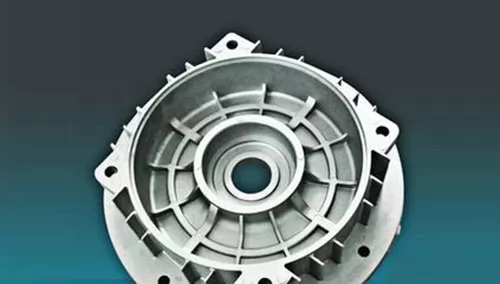
It is difficult to handle the porosity of aluminum alloy die-casting parts after welding. The main reason is that there are too many impurities. How to deal with the pores and impurities of aluminum alloy die-casting parts?
Aluminum alloy die-casting parts, steam holes, sand holes, the most effective way to use a new ceramic filter material, do not use secondary nozzle material, reduce impurities.
Cause Analysis:
1. The reason for the hole is mainly caused by the pores and shrinkage. The pores are mostly round, and the shrinkage is mostly irregular.
2. Causes of stomata: During the process of punching and solidification, the molten metal causes round holes in the surface or inside of the casting due to gas intrusion; the round hole generated by the gas volatilized by the paint; the gas content of the alloy liquid is too high, when solidified Precipitation also produces round holes; the causes of shrinkage holes are: a. Shrinkage holes generated during the solidification of the molten metal due to shrinkage or the final solidification site is not compensated by the molten metal. 2. Locally overheated castings or castings with uneven thickness cause a certain part to solidify slowly, and the surface forms a concave position when the volume shrinks.
Due to the existence of pores and shrinkage holes, the die casting is troublesome in surface treatment. The holes may enter water. When baking and plating, the gas in the holes is thermally expanded, or the water in the holes becomes vaporized. The expansion causes foaming on the surface of the casting, so appropriate methods must be used in production to solve the causes of these defects.
How to solve the pores and impurities of aluminum alloy die castings?
1. About the pores:
The key is to reduce the amount of gas mixed into the casting. The ideal metal flow should be accelerated from the nozzle through the splitter cone and runner into the cavity to form a smooth and consistent metal flow, using a tapered flow path design. That is to say, the pouring flow should be gradually accelerated from the nozzle to the inner gate gradually decreasing, which can achieve this purpose. In the filling system, the gas mixed in is formed by the mixing of the turbulent flow and the metal liquid phase. From the study of the simulated die-casting process in which the molten metal enters the cavity from the casting system, it is obvious that the sharp transition position and the incremental pouring in the runner are apparent. The cross-sectional area of the channel causes the turbulent flow of the molten metal to be ventilated. The smooth molten metal facilitates the flow of gas from the runner and the cavity into the overflow and exhaust vents and out of the mold.
2. About shrinkage holes:
It is necessary to uniformly dissipate all parts of the die-casting solidification process at the same time and solidify at the same time. Shrinkage can be avoided by reasonable nozzle design, gate thickness and position, mold design, mold temperature control and cooling. For intergranular corrosion: mainly to control the content of harmful impurities in the alloy raw materials, especially lead <0.002%. Pay attention to the impurity elements brought by the waste.
Copyright statement: The content of the article is extracted from the network. If there is any infringement, please contact us to delete it!







.png)


.png) +86-574-83036520
+86-574-83036520 +86-574-83008051
+86-574-83008051 sales@innovaw.com
sales@innovaw.com

.png)

.png)
.png)
.png)

.png)
.png)
.png)









.png)

